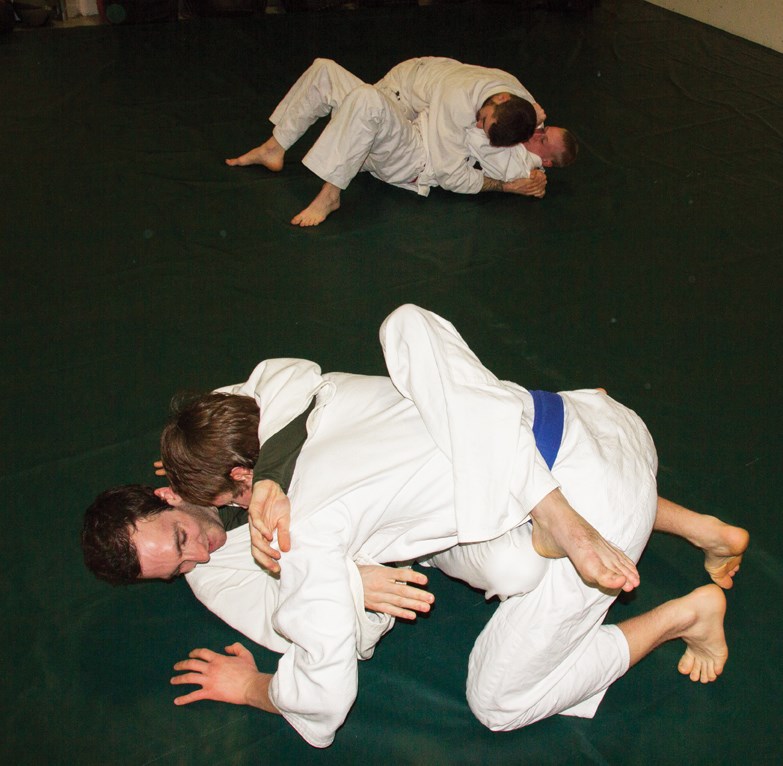Side mount – as we have previously learned – is when you have your opponent on the ground and you get their head and one shoulder in a clinch from the side. It’s not as secure as a full mount, but it’s often more accessible.
This week’s lesson was how to escape from side mount. Head instructor Scott Ewen ran through three different distance variations with instructor Cosme Hlatky.
In this training drill you start on your back on the ground, then an attacker runs in and tries to get you in side mount.
The first variation was the longest distance between you and an attacker, when you have enough time to put your arms up and stop them before they can get a clinch. This creates enough space between you and the attacker to get one of your legs under and around them so you can lock your ankles behind their back and hold them in place while you go for control of their head and arms.
This all happens in a series of movements. First you block your incoming attacker, holding them at arm’s length while you get your knee under their torso, right at the point where the hip bends. As soon as you can, you need to get their upper body in a clinch – because if it’s for real they’re going to start throwing punches right away.
The next movement is to leverage off their body with your knee so you can plant your foot on the ground under them. Once you get it, “shrimp” your way underneath your attacker. It sounds a bit counter-intuitive, but you actually have much better control in this case.
Shrimping – sometimes called “the hip escape” – is a basically when you slide your hips away from your opponent to escape through a narrow opening. In this case you’re shrimping to get into a better position instead of away, but the concept is still the same: that if the centre of your body mass goes first, your arms, legs and head will all follow.
From here you just have to get your foot free so you can get your ankles locked around your opponent and then crush them like a python. Or until they tap out – whatever comes first.
The second two variations involve all of these movements but starting from closer ranges. Basically this means more work to get into the starting position of the first variation – so a lot more shrimping.
See www.coastmartialarts.com and stay tuned for more of the Green Grappler.


